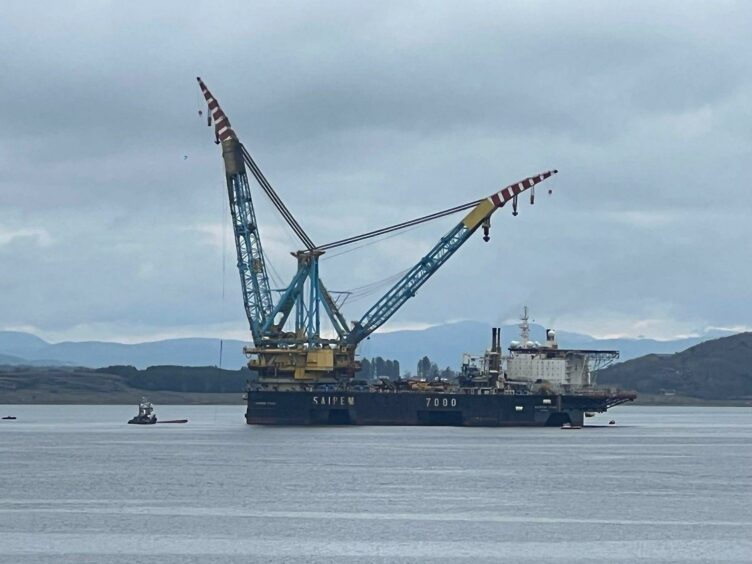
New footage has emerged showing the moment a block wire broke during a test lifting operation onboard the Saipem 7000 on Thursday.
The incident on Thursday morning led to a severe listing of the 198m semisubmersible crane vessel (SSCV) in a channel north of Stavanger, Norway.
The vessel was righted by Thursday afternoon having sustained some damage, while its test load of two barges were left fully capsized.
All 275 crew were reported safe, and nobody was injured during the incident.
Saipem released further details of the incident on Thursday evening, confirming that after having completed DP trials under a DNV testing program, the vessel was performing its planned five-year main crane load test, under the attendance of a classification authority.
“Further to a preliminary assessment, it would appear that the main block wire broke during the test lifting operation and the testing load (two cargo barges) with the main block were released in the water,” Saipem said.
Eyewitnesses reportedly heard loud bangs at 10:00 local time, shortly before the ship began to tilt.
“The unit, after an initial tilting caused by the load release, promptly returned in a stable position and safe condition. A crane assessment is ongoing,” Saipem added.
New video circulating on social media captures the incident, and shows the extent of the vessel’s listing.
Separate footage, apparently from monitoring cameras aboard the SSCV itself, shows the moment the block wire broke, releasing the test load into the water.
https://twitter.com/MarioDeFenza/status/1514907162451103744
The vessel’s huge cranes are rated to conduct heavy lift operations of up to 14,000 tonnes and deepwater pipelaying in water depths of more than 2,000 metres.
As of Friday afternoon, the SSCV had moved closer to shore, though the barges – one of which appears to be the Hebo 4 – remained in place.
Saipem 7000 had journeyed to Norway this week for scheduled maintenance ahead of a second foundation installation campaign at the Seagreen offshore wind farm, off Scotland, which was scheduled to be launched later this month.
Recommended for you
